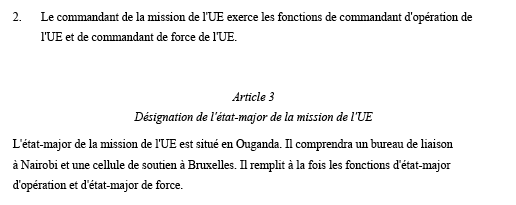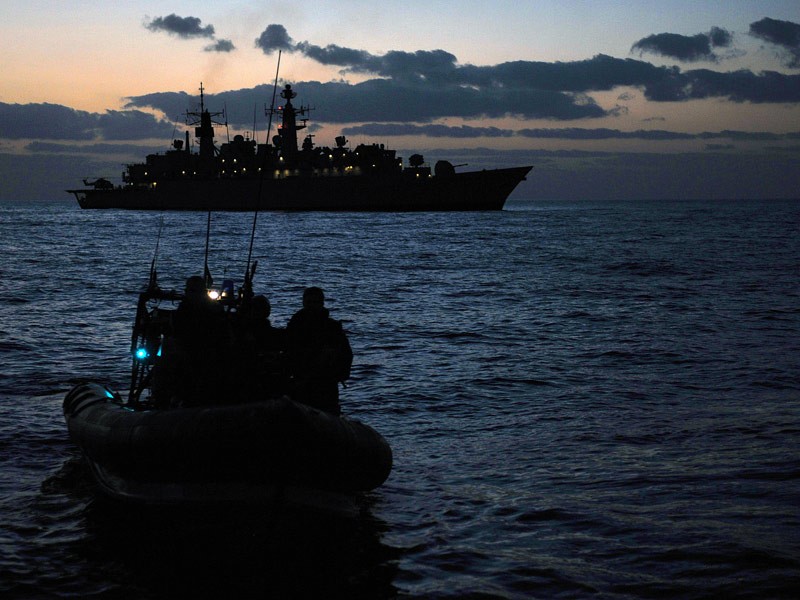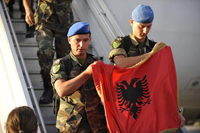EUTM Somalia: a new chain of command
(BRUXELLES2) I was able to read the decision defining the EUTM mission to train the Somali security forces. She does not offer
really surprised. And blog readers won't learn anything really new when it's published (1). On the other hand, it has a certain symbolic interest: it is the first mission launched under the new format resulting from the Treaty of Lisbon (by a proposal and under the command of the High Representative). And this is the first mission to innovate with a compact chain of command: the HR, the COPS (which is chaired, let's remember, by a delegate from the HR), the commander of the operation.
First app in the chain Lisbon
The High Representative at the heart of mission control. The decision was made by proposal of the High Representative. And it's " under the responsibility of the Council and of the High Representative of the Union for Foreign Affairs and Security Policy" (HR), that the Political and Security Committee (PSC) “ exercises political control and strategic direction of the EU military mission (Article 5). The HR thus appears in the chain of political control (previously only the Council had jurisdiction), in an autonomous and complementary way to the Council (which remains in the position of decision-maker). Military control of the operation continues to be entrusted to the EU Military Committee (Article 6). As for the consistency of the operation, it is simplified to the extreme: it is the HR, and he alone, who " ensure the implementation of this Decision and also ensure its consistency with the external action of the EU as a whole, including, in his capacity as Vice-President of the Commission, with the development programs of the EU. The EU Mission Commander assists the HR in the implementation of this Decision. (2).

Only one HQ in the field. Unlike other military operations, the EUTM mission will not have an OHQ (operations quarter) and an FHQ (forces quarter) but a single command, as specified in the draft decision (Article 2 ). This will be based locally, in Uganda, with a “liaison office” in Nairobi (where AMISOM headquarters are located) and a “support cell” in Brussels (Article 3). It will be interesting to follow exactly what this support cell will do, by how much
of people it will be made up of and its usefulness throughout the mission. Will this example be followed by others in the future? I dare not talk about permanent HQ (it's taboo ![]() ). In any case, a direct link between the mission and the political authority (in Brussels) can only be beneficial.
). In any case, a direct link between the mission and the political authority (in Brussels) can only be beneficial.

The budget of the operation. Joint financing (under the Athena mechanism) amounts to 4,8 million euros. As always, it has been discussed enough. Will normally be supported: “accommodation for EU instructors; the training premises necessary to carry out the mission; additional basic infrastructure to cope with the expected increase in the number of people in training” (article 10 decision). To this must be added the personnel and transport costs which are borne directly by each contributing Member State.
(1) Read also: "Somali military training mission, a step taken", THE "Key Points" of the mission (updated elements of this decision) and a summary of the main stages in making this decision.
(2) We can thus compare with the text of the EUNAVFOR Atalanta anti-piracy mission: “ The Presidency, the SG/HR, the EU Operation Commander and the EU Force Commander shall ensure close coordination of their respective activities with regard to the implementation of this Joint Action. » (item 8).

